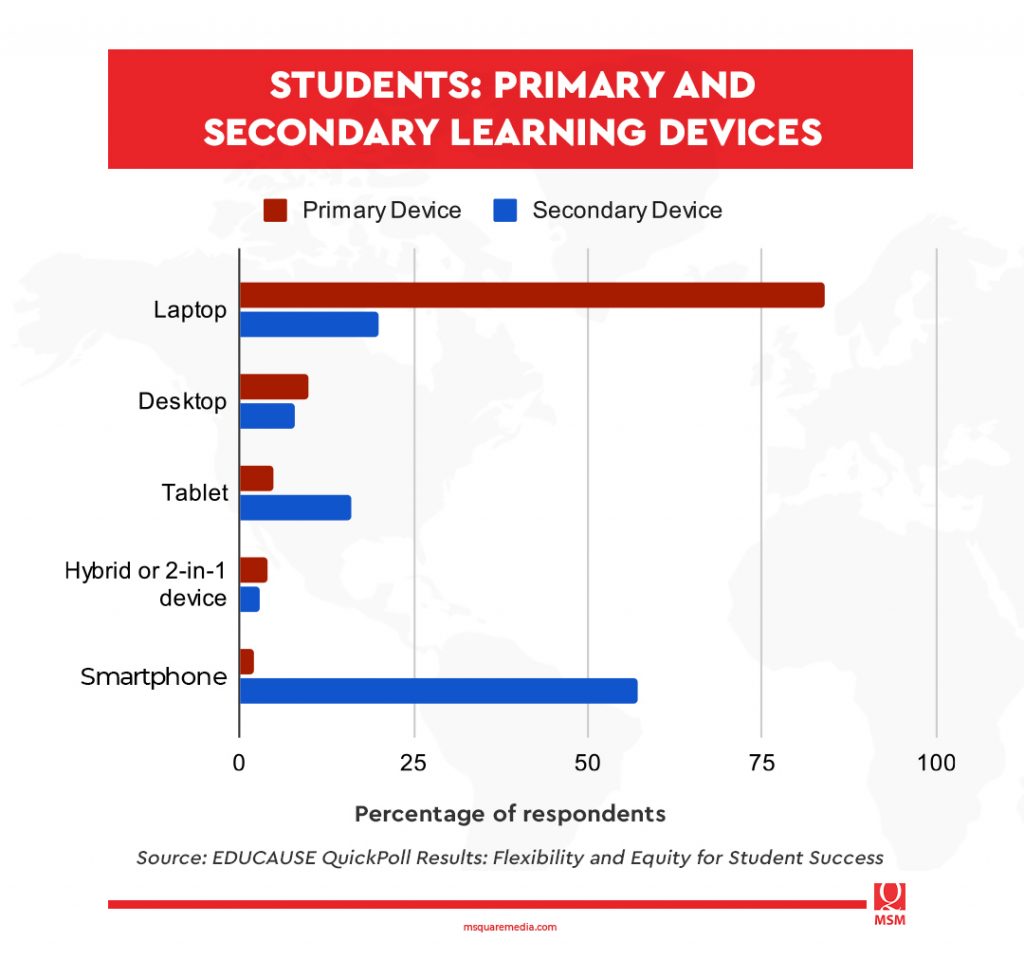The coronavirus pandemic has its present troubles. However, it is creating future problems that, if not addressed immediately and willfully, may send societies into downward spirals. One of the important international issues that need to be addressed is the challenge of education in the new normal.
Key Takeaways
- The pandemic has forced institutions to reinvent themselves in terms of education delivery.
- Edtech solutions were primarily responsible for saving the education sector during the pandemic and these will continue to thrive in the new year.
- As a result of the financial turmoil brought about by the pandemic, it is expected the institutions will be offering competitive pricing of their tuition and fees.
- The students of 2022 will be diverse, and more, thanks to online learning.
Emerging Higher Education Trends
The pandemic has forced the education sector to reinvent itself and the way it looks at education delivery. With health and travel restrictions imposed and on-campus classes cancelled, higher education trends have been steered by the power of edtech (education technology).
With technology, higher education institutions have ducked the disaster of a generational gap in education through initiatives like online learning, distance learning, and blended learning, among others.
Technology has also allowed higher education institutions to tap into the powers of virtual reality, augmented reality, and artificial intelligence, bringing international education trends close to the doors of a digital transformation.
All of these initiatives work together to aid sustainability for campuses via guiding and empowering domestic and international student mobility.
Here are the global education trends we need to pay special attention to in 2022:
Education Technology
The edtech industry will look to continue to build on its momentum jump-started in the last two years because of the pandemic. Edtech providers like Coursera and Udemy took advantage of the season and went public in 2021.
The world is also on the lookout for edtech trends from adaptive learning to smarter AI-powered tutors. With the data collected, higher education institutions can customize their programs and courses, and tweak their delivery whether via online learning or blended learning, to attract more students. This includes adult learners, who are more often than not an overlooked segment.
Mobile learning is also expected to be huge this 2022. According to a poll, more than half of students (56 percent) use their smartphones as a secondary learning tool. Mobile devices are integral lifestyle items these days. Therefore, institutions are expected to tap into mobile learning as a strategy to attract more domestic and international students.
Lastly, this year will usher in the boom of virtual and augmented reality, with an expected market of $600 billion by 2025.

Competitive College Costs
Coming from a financial crisis brought about by the pandemic, higher education institutions are expected to offer competitive pricing for their tuition and fees.
For the academic year 2021-2022, tuition and fees in United States higher education institutions went up by 1.3 percent at two-year schools, 1.6 percent at four-year public colleges, and 2.1 percent at four-year private institutions. Adjusting for inflation however, costs actually declined across the board.
While this is seen as a good thing, the fact remains that higher education tuition rates in the United States remain as high as they’ve ever been. While there is an expected adjustment from U.S. institutions, this can be seen as an opportunity for other international education institutions based in competing countries like Canada and Australia.
Diversity of Students, Staff Members
Student mobility is expected to rebound and institutions will be quick to create pathways in leading students from all walks of life into their respective campuses.
The pandemic, however, has created an interesting student diversity. There is the bulk of traditional students aged 18 to 22, who are looking to enroll in higher education programs. This year’s batch will be made up of digital natives (Gen Z), and will be taking over the number of millennials.
Gen Z students are more focused on their studies, with 59 percent of high school graduates in the United States enrolled in college. These students also feature several ethnic minorities.
Because of online learning, a new stream of students has emerged: online students. And with this new category of students, the average ages of students this 2022 have become both younger and older.
Conclusion
Higher education has averted a full-blown education crisis during the pandemic thanks to edtech. These edtech solutions will allow competitive pricing and interesting programs offered by educational institutions. Higher education institutions in 2022 will surely, to a degree, involve themselves in edtech initiatives. These higher education trends will complete a digital transformation of the education sector worldwide. (SUNEETHA QURESHI)
Suneetha has more than 10 years of experience in the international education sector. As president of MSM GMO, she fortifies its business development outreach globally, particularly in the face of MSM’s foray in edtech-based recruitment via MSM Unify. She preserves the premium, value-adding services provided to each GMO partner institution, including dedicated teams on the ground, agent management, lead generation and inquiry management, application pre-screening, and student and parent support through pioneering pre-departure briefing sessions.
She has an impeccable track record of successfully launching the representative offices in Asia and Africa of many North American and European higher education institutions. Her key strengths include hiring, training, and developing teams as evidenced by the successful results of the dedicated in-country college and university client teams.
Suneetha also has taken the lead in developing several initiatives at MSM, including building robust standard operating procedures, the Rise ‘n Shine team engagement platform, and the organization’s data analytics and audit segments.
Data sources:
Bauer-Wolf, J. (2022, January 4) 7 higher education trends to watch in 2022. Higher Ed Dive. Retrieved from https://www.highereddive.com/news/7-higher-education-trends-to-watch-in-2022/616542/
Pang, A. (2021, December 6) 5 Emerging Technology Trends Higher Ed Is Watching for in 2022. EdTech Magazine. Retrieved from https://edtechmagazine.com/higher/article/2021/12/5-emerging-technology-trends-higher-ed-watching-2022
Pappano, L. (2021, August 5) For adults returning to college, ‘free’ tuition isn’t enough. The Hechinger Report. Retrieved from https://hechingerreport.org/for-adults-returning-to-college-free-tuition-isnt-enough/
Robert, J. (2021, November 5) EDUCAUSE QuickPoll Results: Flexibility and Equity for Student Success. Educause. Retrieved from https://er.educause.edu/articles/2021/11/educause-quickpoll-results-flexibility-and-equity-for-student-success?utm_source=Selligent&utm_medium=email&utm_campaign=er_content_alert_newsletter&utm_content=11-17-21&utm_term=_&m_i=G3e6wU3n6jsl%2B9KITiBJswZrp9hnIVOb3uEwY973%2BbuVFLK%2BIIuId1aYAgdJ7uG1csNTmQ0E0OPnhXoOVXRsNSvnzu1Z7uuGGB&M_BT=43785359182
Bidar, M. (2022, January 7) Why 2022 is the year virtual and augmented reality will come to life. CBS News. Retrieved from https://www.cbsnews.com/news/2022-ces-virtual-reality-augmented/
Kerr, E. (2021, January 21) How Colleges Are Adjusting Their 2021-2022 Tuition. US News. Retrieved from https://www.usnews.com/education/best-colleges/paying-for-college/articles/how-colleges-are-adjusting-their-2021-2022-tuition
Dickler, J. (2021, October 27) College tuition is now rising at a rate lower than inflation. CNBC. Retrieved from https://www.cnbc.com/2021/10/27/college-tuition-is-now-rising-at-a-rate-lower-than-inflation.html
113 Key Generation Z Statistics 2020/2021: Characteristics & Facts You Should Know. Finances Online. Retrieved from https://financesonline.com/generation-z-statistics/
19 Higher Education Trends for 2021/2022: Latest Forecasts To Watch Out For. Finances Online. Retrieved from https://financesonline.com/trends-in-higher-education/


